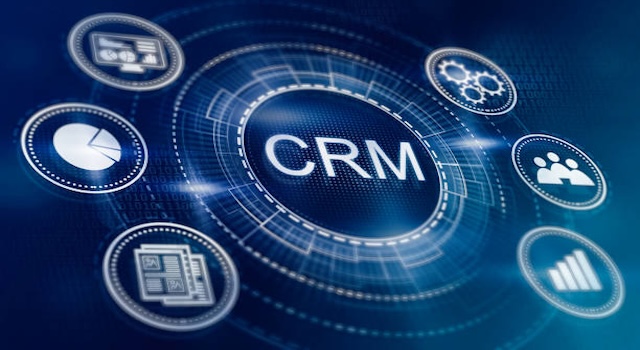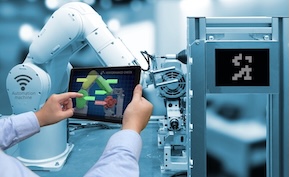CRM
Seamless CRM Integrations Across the Tech Stack

Seamless CRM Integrations Across the Tech Stack: Building the Connected Enterprise
As businesses grow more digitally complex, the customer relationship management (CRM) system has become the central nervous system of the enterprise. Yet, for many organizations, that system still operates in isolation—cut off from marketing platforms, financial tools, or customer service applications. In 2025, the focus is shifting toward seamless CRM integrations across the entire tech stack, transforming disconnected tools into a unified ecosystem that drives speed, collaboration, and intelligence.
The End of the Standalone CRM
In the past, CRMs were designed as self-contained solutions—a digital Rolodex for storing contact information and tracking sales activities. But today’s enterprises demand far more. With marketing automation, customer support, ERP, analytics, and e-commerce all producing valuable data, the CRM must function as an integration hub—one that connects everything from your finance tools to your field apps.
This convergence is being accelerated by a new generation of APIs, middleware, and no-code platforms that make it easier than ever to sync applications in real time. In short, the modern CRM is not a product; it’s a platform.
The Business Case for CRM Integration
Integration is no longer optional—it’s a competitive necessity. According to Forrester, organizations that connect their CRM with at least three other enterprise systems see a 25% boost in productivity and a 30% improvement in data accuracy. The reasons are clear:
- Unified data visibility: A connected CRM ensures that every department—from sales to finance—sees the same real-time customer information.
- Workflow automation: Integrated systems eliminate manual data entry and enable cross-departmental processes like automated invoicing or post-sale follow-up.
- Faster decisions: When systems communicate, leaders can access accurate performance data instantly—no spreadsheet exports or siloed reports required.
Core Integration Technologies Shaping CRM in 2025
Several key technologies are driving this integration revolution:
- APIs (Application Programming Interfaces): APIs allow CRMs to exchange data directly with other systems—like syncing customer payments from ERP or importing lead data from marketing automation tools.
- iPaaS (Integration Platform as a Service): Platforms such as MuleSoft, Boomi, and Workato provide pre-built connectors that unify cloud and on-premise systems without custom coding.
- No-code and low-code tools: Tools like Zapier and Make (formerly Integromat) empower business users to build workflows and integrations without IT involvement.
- Data fabrics and warehouses: Central repositories like Snowflake and BigQuery consolidate information from multiple systems into a single, analytics-ready dataset.
These technologies make integration accessible to organizations of all sizes—not just enterprises with large development budgets.
Key Integration Scenarios and Benefits
Modern businesses are embracing CRM integration to streamline a wide range of use cases:
- CRM + Marketing Automation: Syncing platforms like HubSpot or Marketo ensures that leads captured through campaigns automatically populate the CRM with accurate attribution data.
- CRM + ERP: Integration with systems such as SAP or NetSuite connects front-office sales with back-office operations, aligning inventory, billing, and fulfillment.
- CRM + Customer Support: Tools like Zendesk or Freshdesk feed service ticket data into the CRM, giving sales teams a full view of customer health and satisfaction.
- CRM + Analytics: Dashboards in Power BI or Tableau draw directly from CRM APIs to visualize performance in real time.
When these systems communicate seamlessly, organizations eliminate blind spots—turning fragmented data into actionable intelligence.
Unified Data: The Heart of the Connected Enterprise
At the core of CRM integration lies the concept of the unified customer record. Every interaction—whether a website visit, an invoice, or a support call—feeds into a single, continuously updated profile. This unified data layer ensures that marketing, sales, and service teams operate from the same version of truth.
The benefits extend beyond convenience. Unified data reduces duplication, improves compliance accuracy, and enables more powerful analytics. For instance, AI-driven forecasting models perform significantly better when trained on integrated datasets spanning multiple business functions.
The Role of Workflow Automation
Seamless integration also fuels workflow automation. Instead of manually moving data between systems, organizations can automate entire processes—like automatically generating contracts after a deal closes, or triggering a support workflow when an order is delayed.
This not only improves efficiency but also enhances customer experience. With real-time synchronization, customers receive faster updates, billing accuracy improves, and post-sale engagement becomes more consistent.
Challenges of CRM Integration
While the benefits are compelling, CRM integration can present challenges if not executed strategically:
- Data inconsistency: Integrating systems with mismatched fields or outdated data can create errors and confusion.
- Security and compliance: Each integration adds potential data exposure points that must be protected with encryption and access controls.
- Change management: Teams must adapt to new workflows and trust the automated systems replacing manual processes.
- Integration sprawl: Too many point-to-point integrations can create maintenance headaches without a unified architecture.
To overcome these challenges, leading organizations implement an integration strategy before selecting tools—defining use cases, governance standards, and clear ownership between IT and business units.
Best Practices for Seamless CRM Integration
Success in integration depends on disciplined design. Here are several best practices emerging from high-performing companies:
- Start with data mapping: Identify which systems hold critical data and ensure alignment on data definitions and field formats.
- Adopt an API-first approach: Prioritize CRMs with open, well-documented APIs to support flexibility and scalability.
- Use middleware for orchestration: Centralize integration management on an iPaaS to simplify updates and minimize breakage.
- Automate governance: Monitor API usage, performance, and errors with automated alerts and dashboards.
The Future: Intelligent, Self-Healing Integrations
The next evolution of CRM integration will be AI-driven orchestration. Machine learning models will automatically detect integration failures, reroute data flows, and repair broken connections without human intervention. “Self-healing” integrations will ensure 24/7 reliability in mission-critical business environments.
Additionally, integration layers are becoming increasingly context-aware—understanding not only data flow but also intent. For example, a CRM might automatically trigger a cross-sell campaign when ERP data shows a customer’s stock is running low. These intelligent interactions mark the beginning of truly adaptive enterprise systems.
Conclusion: The Integrated CRM as a Strategic Engine
In 2025, seamless CRM integration defines business agility. When your CRM connects effortlessly with every tool in your stack, data becomes the foundation for speed, alignment, and innovation. The organizations leading this transformation aren’t just automating processes—they’re building a connected enterprise where every decision, action, and customer experience is powered by unified insight.






